Age-Related Hair Loss in Men and Women
Humans have been coping with hair loss for a very long time. Like most mammals, our distant ancestors were protected by a thick covering of body hair that cushioned their skin and helped conserve body heat on cold nights. Emerging from cool shaded forests to migrate across the hot African savannah, humans began to shed body hair to improve temperature regulation. In addition to helping the body efficiently rid itself of excess body heat through perspiration, bare skin also allowed for increased production of vitamin D, a life-saving adaptation that allowed early humans to survive as they trekked north to settle in Europe and Asia. Over time, humans lost most of their hair, with the notable exception of a thick patch retained on the scalp to shield the top of the head from the damaging effects of unfiltered ultraviolet radiation when the sun was directly overhead.
Hair as an Ancient Status Symbol
As humans spread out to colonize the rest of the globe, scalp hair evolved into complex ornamental structures that were easily shaped to form a variety of styles that, over time, came to be recognized as potent symbols of status and power (Fig.1). For sparsely spread out humans, hairstyles served as a vital source of information when encountering other groups of humans. Even at a great distance, hairstyles conveyed visual cues that could reveal the ages, gender, health, physical strength, temperament, reproductive status, and most importantly, presence of potential mates among individuals of a strange tribe. Such clues could help nomadic tribes feel confident in approaching potential allies, or provide warnings to avoid potentially dangerous enemies.
 Fig. 1. The Venus of Brassempouy is a 25,000 year-old fragmentary ivory figurine
Fig. 1. The Venus of Brassempouy is a 25,000 year-old fragmentary ivory figurine
discovered in France in 1982. This rare palaeolithic figure is one of the earliest
known realistic representations of a human face and hairstyle.
Hair in Modern Culture
Far from being a simple vestigial holdover from our furry ancestors, hair continues to exert a significant influence on human relationships in the modern world. In addition to informing others about our age, gender and overall health, contemporary hairstyles embed visual clues that express our social position, economic status, cultural habits and religious beliefs. And just as our ancestors, we respond to such cues when making important decisions regarding interactions with others, especially in personal and business relationships. Considering how the amount, type and condition of our hair can impact the direction and course of many of life’s most important events, it’s little wonder that modern, longer-lived humans experience significant levels of anxiety when confronted with thinning hair.
Hair Loss a Widespread Problem
While losing some hair on a daily basis is normal, shedding more than 100 hairs per day is considered excessive and may indicate a serious problem. Contrary to popular belief, many people who suffer from excessive hair loss are extremely unhappy with their situation and would do anything to change it. Hair loss affects every aspect of life — interpersonal relationships as well as professional ones (it is not uncommon for men to change their career paths because of hair loss).
 Fig. 2. Progressive loss of hair as classified on the Hamilton–Norwood
Fig. 2. Progressive loss of hair as classified on the Hamilton–Norwood
chart, ranging from stages I through VII.
Male Pattern Hair Loss
Male-pattern hair loss (Fig. 2), also known as androgenetic alopecia, is the most common form of balding, affecting roughly 40 million men in the US. Approximately 25 percent of men with male-pattern hair loss will begin to lose their hair by age 30, and up to 66 percent will begin balding by age 60. Male-pattern hair loss is closely linked to androgens — sex steroid hormones synthesized from cholesterol in the testes, ovaries and adrenal glands. The primary androgens — testosterone, pregnenolone, androstenedione and DHEA (dehydroepiandrosterone) — normally regulate male and female sexual development and behavior by binding to receptors on target cells throughout the body.
Another androgen, dihydrotestosterone (DHT), has been identified by researchers as a primary cause of male pattern baldness. DHT is synthesized from testosterone by the enzyme 5alpha-reductase. When DHT binds to receptors in the hair follicle, it causes the hair roots to shrink, or “miniaturize.” DHT has also been shown to shorten the amount of time hair spends in the growing (anagen) phase from as long as five years to as little as two months.
In 1998, researchers discovered that men genetically prone to male pattern baldness have significantly higher numbers of androgen receptors in the hair follicles located across the forehead and scalp — exactly those areas where hair loss first appears in androgenic alopecia. Additional research has shown that these androgen-sensitive follicles also have significantly higher levels of 5alpha-reductase (1.5 to 3 times higher) and DHT than hair follicles from other areas of the scalp.1
Over time, DHT’s miniaturizing effect can shrink large adult hairs, resulting in finer, vellus hairs only 10% as wide as normal and barely an inch long. This leads to the “peach fuzz” common to early stage balding. At this stage if the effects of DHT aren’t reversed or halted in time, the hair follicles will shrink down until they eventually vanish, resulting in complete baldness in the affected area.
Female Pattern Hair Loss
Hair loss isn’t exclusively a male problem — approximately 50% of all women over the age of 50 experience a similar condition, referred to as female androgenic alopecia (Fig. 3). Symptoms in women are generally less severe than those experienced by men, appearing as an overall thinning of hairs across the top of the head, and the gradual loss of hairs down the center part-line of the scalp. The reason women experience milder symptoms is due to hormonal differences — women produce significantly lower amounts of testosterone than men (about 95% less on average). Women also produce lower levels — about 60 percent less than men — of the enzyme 5α-reductase that converts testosterone into DHT.
 Fig. 3. Progression and severity of receding hair line in women with androgenetic hair loss
Fig. 3. Progression and severity of receding hair line in women with androgenetic hair loss
is generally classified on the Ludwig scale, ranging from stages I through III.
Additionally, women produce higher levels of another enzyme, aromatase (estrogen synthase), that converts testosterone into the female hormone, estradiol. While males also produce small amounts of aromatase, research has shown that aromatase levels in the frontal and rear scalp follicles in women are 4 to 6 times higher than in men, which is why women rarely lose hair in these areas.
Healthy Follicles for Healthy Hair
Hair follicles are among the most active and fastest growing structures in the body. Human hairs are produced by follicles — specialized organs that cover the entire body, with the exception of the palms and soles of the feet. Follicles are composed of three major structures — the dermal papilla, hair matrix, and hair shaft. (Fig 4).
 Fig. 4. Cutaway schematic of a hair follicle showing structure of
Fig. 4. Cutaway schematic of a hair follicle showing structure of
shaft, bulb and microcirculatory vessels.
The dermal papilla, a pear-shaped structure located at the base of the hair follicle, is comprised of connective tissues and a capillary loop containing tiny blood vessels that provide the nutrients required for hair growth.
The papilla is surrounded by the “matrix” — a bulb-shaped collection of specialized epithelial cells that produce a protein, keratin, that actually forms the hair fiber. The matrix also contains melanocytes, specialized pigment cells that infuse the growing hair shaft with melanin, the compound that gives otherwise transparent hair its natural coloring.
Different types of melanin produce different colors — yellow, rust, brown, and black — that combine to produce a wide variety of hair colors, ranging from blond to brown to pitch-black. Red hair is the result of another type of coloring agent, the iron-containing pigment called trichosiderin.
Three Stages of Hair Growth
Mature human hair growth occurs in three distinct phases — growth, transition and rest — that are collectively referred to as the hair cycle (Fig. 5).
1. Growth Phase (Anagen): Each hair cycle begins with a growth (anagen) phase. This is marked by rapid cell division in the hair matrix that builds up layers of keratin to form a single hair shaft that grows out from the follicle at a rate of up to one inch per month. This growth phase typically lasts two to six years. At any given time, about ninety percent of all scalp hairs are in the active growing phase.
2. Transitional Phase (Catagen): At the end of the anagen phase, hair growth ceases and the follicle enters the transition (or catagen) phase. During this phase hair matrix cells begin to die off as the follicle base and bulb begin to shrink. Over time, this shrinkage (miniaturization) pinches off the lower hair bulb, cutting off access to the blood vessels and circulation necessary for hair growth. At any given time, one to two percent of all hair follicles are in this transition phase, which usually lasts for between one to two weeks.
3. Resting Phase (Telogen): The final stage of the hair cycle is the resting (or telogen) phase. During this phase, the mature hairs reside in the follicle five to six weeks before falling out. Approximately 10 percent of all hairs are in this transition period at any time, accounting for the normal shedding of thirty and fifty hairs each day.
 Fig. 5. Three stages of human hair growth: Anagen (growth) phase, lasts
Fig. 5. Three stages of human hair growth: Anagen (growth) phase, lasts
from two to six years; Catagen (transitional) phase, lasts from one to
two weeks; Telogen (resting) phase, lasts five to six weeks.
After shedding the hair shaft, the follicle begins a new cycle of hair growth, marked by the swelling of the dermal papilla and the formation of a new capillary loop. As blood vessels reattach to the papilla, they grow and expand four-fold to provide the hair matrix with the nutrients necessary for growing new hair.The entire process — growth, transition and rest — makes up one complete hair cycle. Each hair follicle is limited to the number of hair cycles that can be completed — estimated to between 20 and 25 cycles — before reverting to vellus hairs (peach fuzz) and eventually disappearing.
Human Aging and Hair Appearance
In humans, the hair growing (anagen) phase is at its longest — ranging up to 7 years — and the transition/resting phases are at their shortest — lasting only about 4 months — throughout youth and adolescence. As a result of the great amount of time devoted to supporting hair growth in adolescence, hair is at its healthiest and most attractive throughout this phase of life.
Beginning at around age 35, changes in hair cycles begin to affect the density and overall appearance of hair. With each successive cycle, the amount of time spent in the growing phase is reduced, resulting in shorter, thinner hairs. Additionally, the amount of time spent in the resting phase lengthens, extending the period between when a hair falls out and when a new one grows back. The result of these changes is a gradual reduction in overall hair density and appearance.
Changes in hair color also begin to appear at this time. As pigment-producing melanocytes gradually die out, hairs begin to lose their luster and color, slowly turning gray and eventually becoming totally white.
Excessive Hair Loss
While gradual hair loss is a normal part of human aging, for many people excessive hair loss, or balding, is a significant source of anxiety. Based on several characteristics, hair loss can be roughly divided into two categories — temporary and permanent. Temporary hair loss, which is usually caused by excessive stress, poor diet, hormonal imbalance and endocrine dysfunction, can often be restored within six months to two years after eliminating the underlying cause(s). Permanent hair loss is caused by genetics and is considered irreversible.
An ideal solution for hair loss would be one that 1) promotes new hair growth while extending the anagen (growing) phase, 2) lengthens the catagen (transitional) phase, and 3) shortens the telogen (resting) phase.
The two most widely-used medical treatments for androgenic alopecia — Propecia® and Rogaine® — offer partial solutions by addressing hair loss in two completely different ways. Propecia primarily works to halt hair loss by blocking the production of the follicle-damaging hormone, DHT, while Rogaine aims to support hair growth by increasing blood flow to the hair roots.
Option 1: Blocking Production of DHT
Propecia (Finasteride), is an oral prescription drug from Merck & Co. that was first marketed as Proscar® for the treatment of enlarged prostate (benign prostatic hyperplasia or BPH). Overabundance of DHT has been established as a contributing factor in the development of BPH and prostate cancer. Proscar (5 mg finasteride) has been shown to effectively lower DHT levels by preventing the enzyme, 5alpha-reductase, from converting testosterone into DHT. Soon after Proscar was approved, Merck researchers noted that men taking finasteride were showing signs of hair regrowth. This led Merck to begin testing a lower dose of the drug finasteride as a potential treatment for hair loss, and in 1997 the FDA approved Propecia™ (finasteride 1 mg) for the treatment of androgenic alopecia in men.
Following its introduction, Propecia was shown to be highly effective at decreasing DHT concentrations in the blood (by up to 70%), and the scalp (by up to 60%) to reverse DHT-related hair loss of the vertex (at top of head) and anterior mid-scalp area. Unfortunately, there were some serious side effects.
In addition to being present in hair follicles, 5α-reductase is also abundant in the prostate and seminal vesicles, where it plays a vital role in the healthy development and maintenance of normal physiological functions. Reduction of DHT in these organs has now been linked to unwanted side effects in men, including decreased libido, sexual dysfunction, and a reduction of mature sperm count. Additionally, women cannot use Propecia, and Merck explicitly warns women who are or may be pregnant not to even handle crushed or broken Propecia tablets, since the active ingredient may cause abnormalities of a male baby’s sex organs.
Option 2: Increasing Blood Flow to Hair Roots
Minoxidil (Rogaine) was originally developed as an oral drug for the treatment of hypertension, based on its ability to relax vascular smooth muscles and produce peripheral vasodilation. By directly stimulating circulation to the hair follicles, Minoxidil was found to extend hair and redirect resting hair follicles into new growth.
Animal experiments have shown that Minoxidil works, in part, by increasing vascular endothelial growth factor (VEGF) to promote hair growth and reactivate dormant hair follicles. However, when taken orally to restore hair, minoxidal was also found to have a number of side effects, including unwanted hair growth in women (hirsutism). Most of these side effects were averted by the introduction of a topical form of Rogaine for use as an external-use hair-restorer in 1988.
Clinical literature shows that Minoxidil performs excellently in preventing hair loss (80%), but less than 20% of patients with androgenetic alopecia experience actual hair growth. Clinical observations indicate that the effects of Minoxidil can be seen within 6-12 months of continual use. Yet once treatment has stopped, within three months all hair growth effects disappear and revert back to the untreated state.
New Option for Healthy Hair
In Traditional Chinese Medicine (TCM), conditions such as hair loss are addressed by balancing both the “surface” and “root” levels of the problem. Now, after 10 years of intensive research, development, and clinical evaluation, a patented, all-natural herbal TCM supplement is available in the United States to aid in halting age-related hair loss while promoting healthy hair growth.* By promoting healthy circulation in the tiniest blood vessels (microcapillaries) that supply nutrients and oxygen to the hair follicles, the formula supports thicker, healthier hair, improved skin tone and overall health and vitality.*
Accidental Discovery Leads to Breakthrough
Serendipity, defined as the accidental discovery of something unexpected, played a key role in the development of the new herbal hair restoration formula, B401. In 2002, a leading medical lab in Taiwan had recruited a team of herbal researchers and veterinarians to work on developing a new, natural treatment for a common inflammatory skin disease that cause painful skin blisters and hair loss in household pets.
After two years of R&D, the team developed an all-natural herbal formula that was just as effective as the antibiotics and steroids commonly used to treat afflicted animals, but with the added benefit of being free of the dangerous side effects that typically limit the use of such drugs in pets (Fig. 6).
Fig. 6. Results after 4 weeks of treatment with experimental herbal hair support formula, B401, resulting in a gradual return to normal hair growth.
As the lab director reviewed the research team’s final report, his attention was drawn to a section that detailed a surprising observation. In addition to regrowing all of their lost hair at a surprisingly rapid rate, all of the treated animals were maintaining thicker, healthier fur coats, even during warm periods when seasonal shedding of hair was expected.
 Fig. 7. Serious loss of hair due to Alopecia X on the left, and following two months of treatment with B401 on the right, with a gradual return to normal hair growth.
Fig. 7. Serious loss of hair due to Alopecia X on the left, and following two months of treatment with B401 on the right, with a gradual return to normal hair growth.
Intrigued by this unexpected finding, the researchers decided to test the formula on a group of dogs suffering from Alopecia X. Also referred to as Black Skin disease, Alopecia X causes hair loss on both sides of a dog’s body and is generally considered an untreatable disorder. After a few months of treatment with B401, the animals had completely recovered from the condition and regrown all of their previously lost hair (Fig. 7).
Early Success with Human Volunteers
Inspired by the formula’s ability to halt hair loss and restore hair growth in animals, the researchers decided to see how the formula worked in humans. The results of a small trial with five volunteers experiencing abnormal hair loss were promising, and the lab approved a full-scale program designed to optimize and refine the formula for long-term human use.
Human Trials with Alopecia Areata
The earliest trials involved a group of patients diagnosed with Alopecia areata, or “spot areata.” In early stages, Alopecia areata causes clumps of hair to fall out with a gentle pull, leaving patients with one or more bare spots on the scalp. Alopecia areata occurs in young people at a rate of approximately 17 per 100,000 per year, and while the condition isn’t harmful, the psychological impact is problematic for young patients. Fortunately, the condition is generally temporary, and 80% of the patients eventually self-heal.
In addition to the form seen in younger people, a more pervasive form of Alopecia areata appears in women (and occasionally men) over the age of 35. Also characterized by extensive hair loss, the condition usually clears up within one to two years, but the psychological stress of going bald makes this condition a profitable area for treatments at hair loss centers.
The most common treatment for Alopecia areata involves monthly injections of corticosteroids, and twice-a-day external application of 5% minoxidil. Treatment generally requires 8-12 weeks before hair begins to regrow.
AA Case 1: Mr. W. was a 50-year-old sales manager who had lost a large amount of hair in the occipital region. He came to the research center after being treated with steroid medications for one month. The steroids had not alleviated his alopecia areata, and the area of hair loss was continuing to spread. After one month of taking B401, Mr. W. reported significant improvement in his condition, and within two months all of his hair was restored.
AA Case 2: C. was a 15-year-old student with several bald spots across the back of her head. By the time C. came to the center, she had already completed a month of conventional drug treatment without any improvement and was emotionally stressed from additional hair loss. After taking B401 for one month, her hair loss stopped and new hair started to grow back. Within several months all of her hair was restored.
AA Case 3: A family brought in a 10-year-old student who had begun to lose her hair. Her family had her treated by both Chinese and Western doctors, but there was no improvement and her hair loss was increasing. After 50 days of treatment with B401, her condition had improved significantly, with older bald spots filling in, and hair loss at newer spots significantly slowed.
B401 and Male Pattern Hair Loss
Pleased with the results of the Alopecia areata trial, the lab next began testing B401 on subjects with male pattern baldness. The results revealed that almost all men with stage 3 or 4 hair loss reacted exceptionally to B401 within six months, regrowing fine hairs on the top of the scalp that grew thicker and longer over time. Subjects with stage 4 to 5 hair loss were more likely to experience significant regrowth; however, improvements in stage 7 male-pattern baldness were only noticeable close up, with thinner hairs becoming thicker and longer, but with little change on the forehead.
The following images (Figures 8 – 11) document the results of four cases of male pattern baldness after treatment with B401.
 Fig. 8. C., 43-years-old, after taking PriaPlex for 1.5 years, revealing reduced hair loss, thicker, denser hair, and increased coverage across middle of scalp.
Fig. 8. C., 43-years-old, after taking PriaPlex for 1.5 years, revealing reduced hair loss, thicker, denser hair, and increased coverage across middle of scalp.
 Fig. 9. Mr. L., 29-years-old, after taking PriaPlex for one year, revealing increased hair density and overall hair coverage.
Fig. 9. Mr. L., 29-years-old, after taking PriaPlex for one year, revealing increased hair density and overall hair coverage.
 Fig. 10. Mr. S., 38-years-old, after taking PriaPlex for one month, revealing thicker hairs and increased hair density.
Fig. 10. Mr. S., 38-years-old, after taking PriaPlex for one month, revealing thicker hairs and increased hair density.
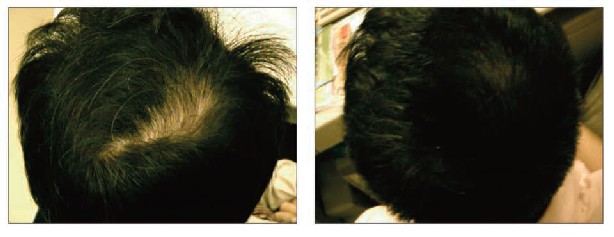 Fig. 11. Mr. D., 40-years-old, after taking PriaPlex for eight months, revealing reduced hair loss, regrowth of original hair across top of scalp.
Fig. 11. Mr. D., 40-years-old, after taking PriaPlex for eight months, revealing reduced hair loss, regrowth of original hair across top of scalp.
Human Trials with Alopecia Totalis
Following the positive outcome of the male pattern baldness trials, the researchers began to test the new formula on several women diagnosed with Alopecia totalis, a condition that causes lymphocytes to attack hair follicles during the growth phase of the hair cycle. In extreme cases, Alopecia totalis can result in the total loss of hair on the head, face, eyebrows and eyelashes within six months. Full recovery is rare, and even with effective treatment, new hair growth in patients with alopecia totalis is often incomplete.
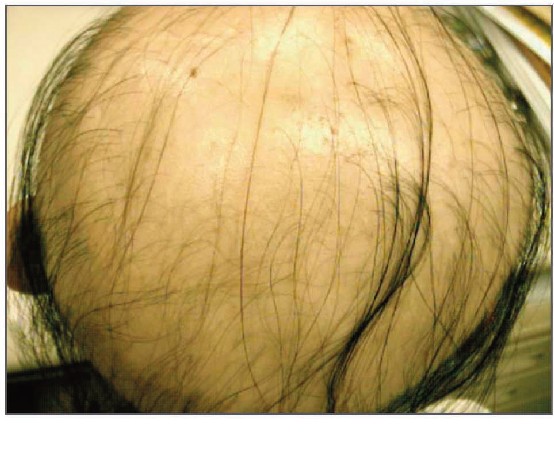 Fig. 12. Ms. Y., 26-years-old, diagnosed July 21, 2006, arrived at the clinic after being told her condition was incurable.
Fig. 12. Ms. Y., 26-years-old, diagnosed July 21, 2006, arrived at the clinic after being told her condition was incurable.
AT Case 1: Ms. Y., 26-years-old, was diagnosed with Alopecia totalis in July, 2006. Early signs of hair loss were attributed to stress from work and school, but within two months all of the hair on her head, eyebrows included, had dropped out. Conventional treatment at two Western hospitals failed to address the problem, and by the time Ms. Y. entered the B401 trial all that remained of her hair were a few black strands in the occipital region (Fig. 12).
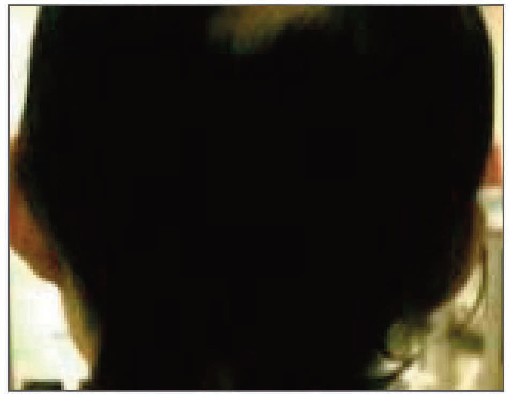 Fig. 13. Ms. Y., 26-years-old, after taking PriaPlex for six months.
Fig. 13. Ms. Y., 26-years-old, after taking PriaPlex for six months.
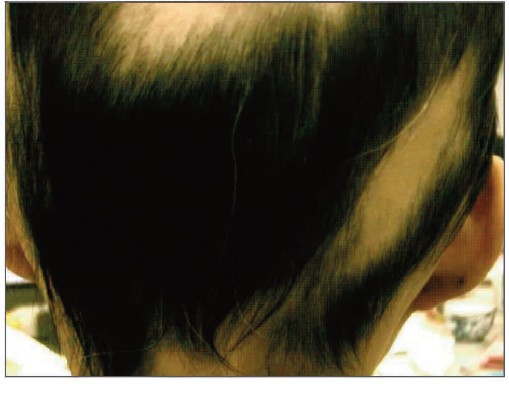 Fig. 14. Ms. Y., 26-years-old, after taking PriaPlex for 18 months.
Fig. 14. Ms. Y., 26-years-old, after taking PriaPlex for 18 months.
After taking B401 for six months, new hair began to appear (Fig. 13). After two years of treatment, Ms. Y. fully regrew her hair. (Fig. 14) Two years after the completion of her initial treatment, Ms. Y. reports that her hair is still full and strong, with good volume and no further loss.
AT Case 2: Ms. L. had previously tried every other available treatment to reverse her hair loss, but all failed. She had been completely bald for eight years by the time she enrolled in the trial. After taking the formula for six months, there was no improvement in her condition and Ms. L. decided to discontinue treatment.
Fig. 15. Ms. H., 28-years-old, before taking PriaPlex.
AT Case 3: Ms. H., 28-years-old, experienced serious, unexplained hair loss
in the summer of 2007, and within two months had lost all of her hair, including eyebrows (Fig. 15). Ms. H. began to experience new hair growth within one month of taking B401 (Fig. 16). Significantly, Ms. H. reported that her previously white hair was growing back in her natural color, black (Fig. 17). The researchers expected that newly grown hair would not regain its original color for at least 2 or 3 full hair cycles, so her case was especially interesting. Ms. H. reached a near-full recovery in six months (Fig. 18).
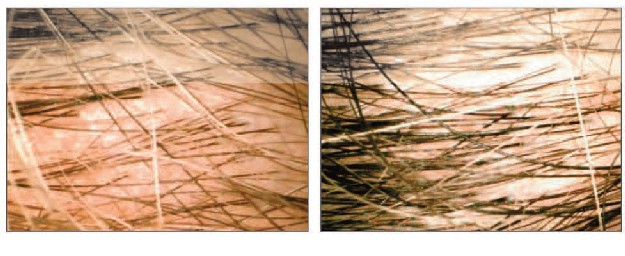 Fig. 16. Ms. H., 28-years-old, after taking PriaPlex for 2 months, revealing thicker, longer hairs in occipital region.
Fig. 16. Ms. H., 28-years-old, after taking PriaPlex for 2 months, revealing thicker, longer hairs in occipital region.
Fig. 17. Ms. H., 28-years-old, after takin gPriaPlex for 2 months.
Fig. 18. Ms. H., 28-years-old, after taking PriaPlex for 6 months.
Unfortunately, Ms. H. stopped taking B401 after her initial treatment and experienced a relapse after six months.
Note: Each of these three cases had completely different results: the first successful, the second ineffective, and the third a relapse. Note that in the second case, researchers had previously predicted that newly grown hair would not regain its original color for at least 2 or 3 full hair cycles, so her case was especially interesting. From these three cases, the scientists concluded that the longer one waits before beginning treatment with B401, the greater the chances for permanent and unrecoverable damage to hair follicles. The scientists also concluded that early treatment at the first signs of hair loss improves the probability of total recovery. Additionally, treatments have to be continued until the underlying condition is eliminated to prevent a future recurrence of hair loss.
Restoring Hair Growth Cycles
Modifying hair follicle growth cycles is a complicated and delicate matter. Current scientific research has managed to identify only a handful of the numerous growth factors and hormones believed to be involved in hair proliferation and growth. For example, Fibroblast Growth Factor 3 (FGF-3) and Fibroblast Growth Factor 5 (FGF-5) are both known to contribute to shifting follicles from hair growth to follicle degradation. Conversely, Insulin-like Growth Factor (IGF-1) and Fibroblast Growth Factor 7 (FGF-7) have been shown to support hair growth by lengthening the telogen (growth) phase of hair follicles. Additionally, Vascular Endothelial Growth Factor (VEGF), Hepatocyte Growth Factor (HGF) and Endothelial Cell Growth Factor (EGF) have also been shown to aid in extending hair growth period.
Currently these growth factors and hormones are useful for filtering hair growth regulators and interpreting their mechanism of action. However, given the gap between the basic research (in vitro) and clinical applications (oral), most current treatments are limited to topical hair growth products. Saw palmetto extract, for example, can inhibit 5α-reductase in vivo, but has no effect when taken orally, which is why it is commonly used in topical hair products. Adenosine, which has been shown to enhance FGF-7 levels in hair follicles, is another popular ingredient for topical hair tonics. Last but not least, numerous plant extracts are added to hair creams to block the effects of FGF-5. Nevertheless, these topical treatments are all restricted to addressing the “surface” issues involved in hair loss, instead of the “root” causes.
B401 Increases Hair Growth Factors
According to animal studies commissioned by the Agriculture Department of Taiwan and completed by the Institute of Animal Science, the patented formula, B401, was found to enhance levels of Vascular Endothelial Growth Factor (Fig. 19) and Hepatocyte Growth Factor (Fig. 20) in hair follicles. B401 was also shown to increase the number of active hair follicles (Fig. 21), while promoting faster growth and increased length of individual hairs (Fig. 22).
Coupled with the inclusion of botanical ingredients known to effectively enhance skin blood circulation, these findings suggest that B401’s mechanism of action is superior to that of currently available treatments. Human case studies indicate that B401 can prevent hair loss in 85% of subjects within
Fig. 19. Increase in local hair follicle expression of Vascular Endothelial Growth Factor
following administration of PriaPlex for 28 days.
Fig. 20. Increase in Hepatocyte Growth Factor concentration following administration of PriaPlex for 28 days.
Fig. 21. Increase in the number of active hair follicles following administration of PriaPlex for 28 days.
Fig. 22. Increase in hair growth following administration of PriaPlex for 15 days.
six weeks while promoting hair growth, improving skin texture, and boosting energy levels. Each of these effects were listed in the patent applications that were subsequently approved in both Taiwan and the United States. And because B401 is comprised of essence herbs traditionally used to support healthy endocrine and hormone levels, the formula may also aid in supporting healthy cardiac function.
Numerous clinical cases have shown the Taiwan-US patent formula B401, if used uninterruptedly with sufficient amount, can stop abnormal hair loss within four to eight weeks. New hair generally begins to appear on the scalp in three to six months time. Additionally, original hair color is likely to emerge amongst white hairs six months later.
Patents Approved in U.S. and Taiwan
After years of study, B401 was successfully released as a new food-based formulation for reducing shedding. In 2010, patents for B401 were approved in both the United States (Patent Number: U.S. 7,838,048 subject: Medical herb composition for inhibiting shedding of a mammal’s hair and method for preparing the same) and Taiwan (Taiwan patent number I 329 491. Title: Chinese medicine composition for hair loss reduction and its preparation method). According to the Intellectual Property Office of Taiwan, B401 is the only anti-hair loss patent ever granted in Taiwan.
Fig. 23. Taiwan and U.S. Patents.
Additional Benefits of B401
In addition to halting hair loss and increasing hair growth, the proprietary blend of nourishing herbs in B401 have also been shown to support and benefit general health. Case studies have shown that those taking B401 report experiencing increased levels of vitality and energy after 1 to 2 weeks, and improved skin tone and texture after 6 to 8 weeks.
Animal tests have also shown that the formula exerts anti-fatigue and liver-protective functions, and in vitro trials have identified significant antioxidant effects. Animal studies have also revealed significant anti-aging benefits.
Summary
Age-related hair loss is caused by two major factors: hereditary-pattern baldness and microcirculatory dysfunction from the lack of nutrition to the hair follicles. The current medical solutions are Minoxidil (Rogaine) and Finasteride (Propecia). Yet each has serious side effects. In recent years, there have been studies that indicate certain food material herbs can alleviate shedding; however, the treatments rendered are limited to external use.
After 10 years of intensive research, development, and clinical evaluation, B401 herbal hair support formula for men and women is now available in the United States. B401 addresses hair health from the inside out by combining essence herbs traditionally used to reduce excessive hair loss with a unique blend of botanicals shown to help support circulation to nourish the skin and follicles.* The result is a unique, patented, all-natural herbal supplement for addressing age-related hair loss, promoting healthy hair growth and improving skin tone, energy and vitality.*
Availability
B401 is currently distributed under license in several countries. In the U.S. B401 is available as PriaPlex®.
* These statements have not been evaluated by the Food and Drug Administration.
This product is not intended to diagnose, treat, cure, or prevent any disease.












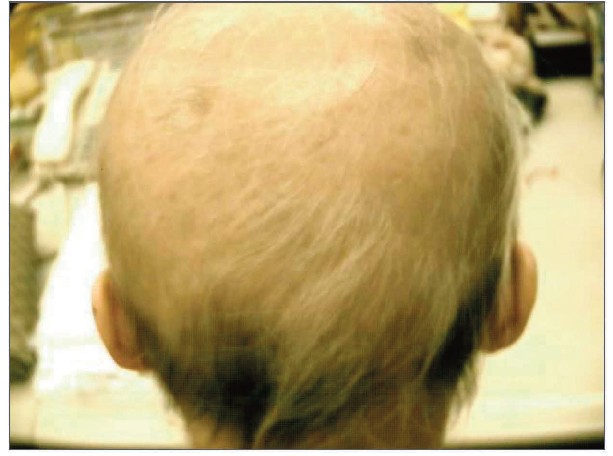
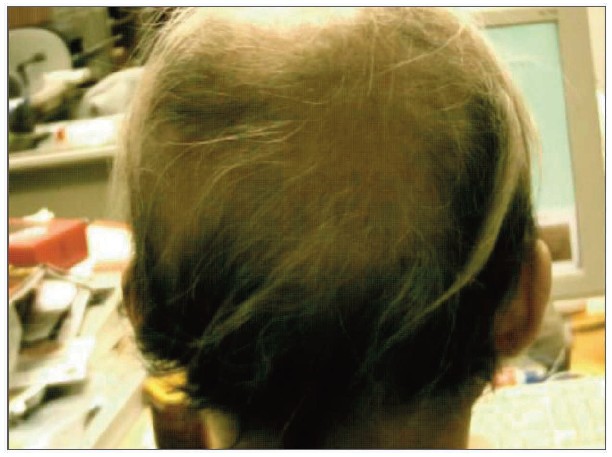
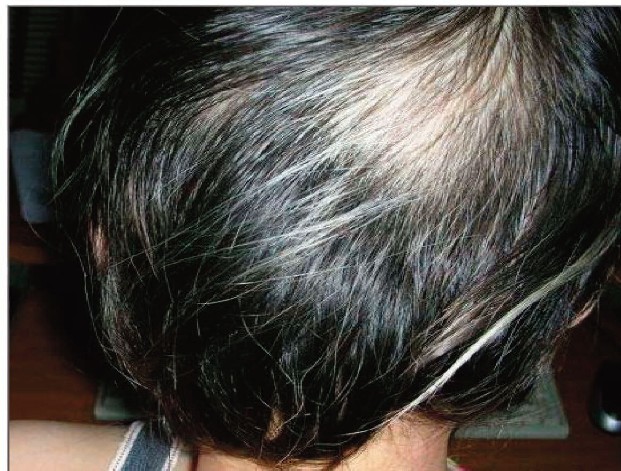
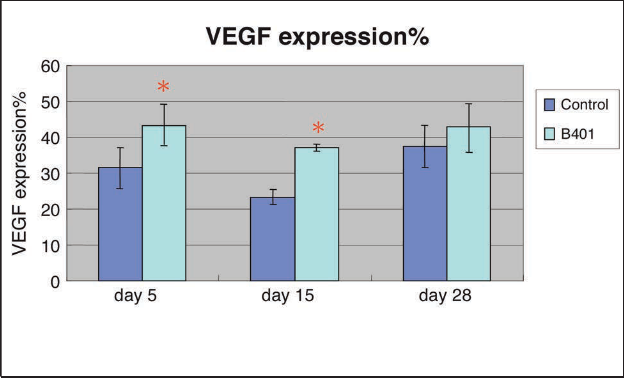
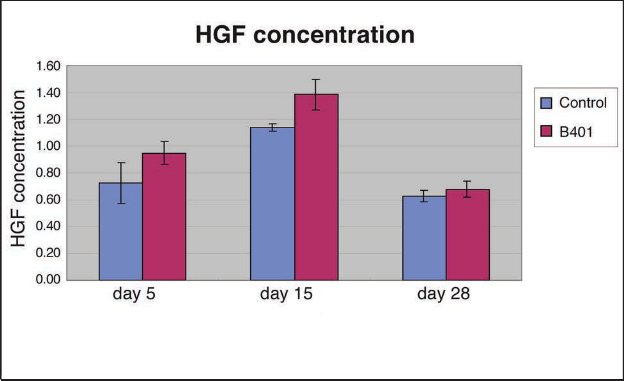

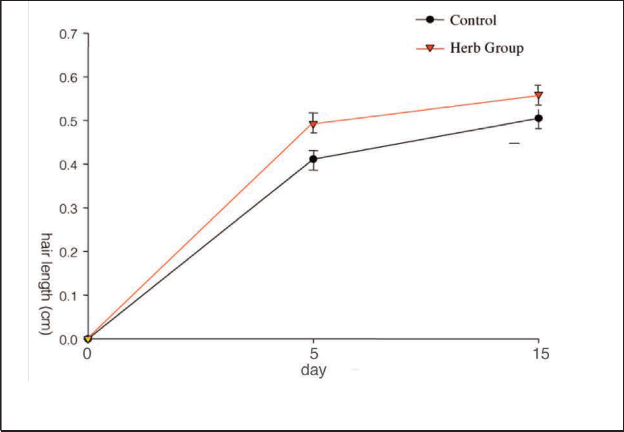

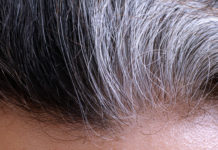

[…] Read this article: New, Patented Herbal Formula Halts Hair Loss in Men and Women … […]